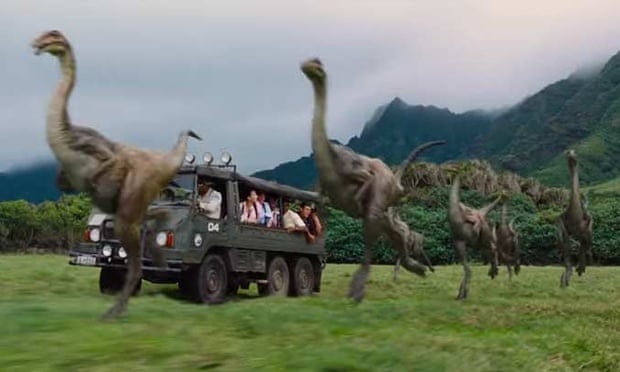The trailer for the latest big screen outing of the Jurassic Park franchise is causing delight and consternation in equal measure over the appearance of the extinct stars. Here, paleoartist John Conway tackles the ongoing arguments about keeping the dinosaurs up-to-date.
The 1970s and 1980s were a good time to be interested in dinosaurs. A
scientific revolution was happening, and the sluggish dumb evolutionary
dead-ends of old were being replaced with fast, social and intelligent
beasts. At least, that was understood by dinosaur enthusiasts. The
general public, on the other hand, was still mostly familiar with the
old lumps in swamps.
That was until the original Jurassic Park blew them out of the water.
Jurassic Park surprised most people with its radical new dinosaurs. In
fact, one of the central plot points is just that: dinosaurs are not
what we think they are. The filmmakers worked with scientists to get a
lot of stuff about dinosaurs right, and the most memorable scenes in the
film reflect that. Enormous sauropods move about on land with the grace
of giant elephants, Gallimimus running in flocks at terrifying speeds, T. rex as
a lithe narrow-hipped running hunter, these things were new to most
people, and reflected the new scientific thinking on dinosaurs.
Oh sure, it got things wrong in places, and we dino-enthusiasts could
rattle off a list of them, but Jurassic Park used science as the basis
for its aesthetic power to surprise (and terrify) us. For this reason,
it inspired a whole generation: meet a paleontologist of the right age,
and there’s a decent chance that Jurassic Park is where they got their
start. They were curious as to where this radical new vision of
dinosaurs had come from.
Since 1993, there has been another revolution in our understanding of
dinosaur appearance. The naked, scaly dinosaurs of the Jurassic Park
ilk have been replaced by feather, spine, quill and
things-we-don’t-even-have-names-for covered beasts that look every bit
as strange as the original Jurassic Park dinosaurs did to their
original audience. This information has been slow to get into the
public perception, as books, many museums, and documentaries have been
slow to embrace this new look.
Article link

No comments:
Post a Comment